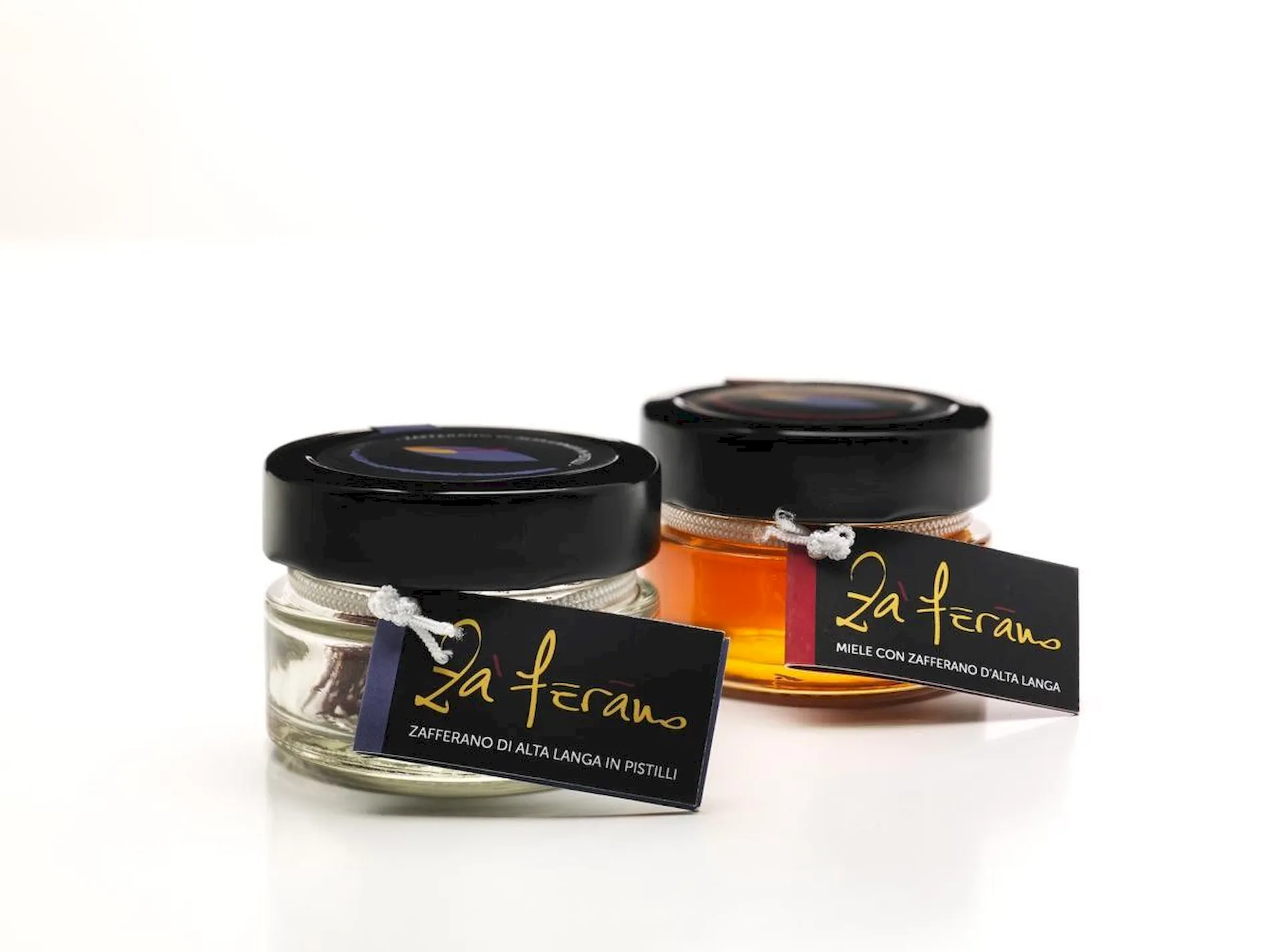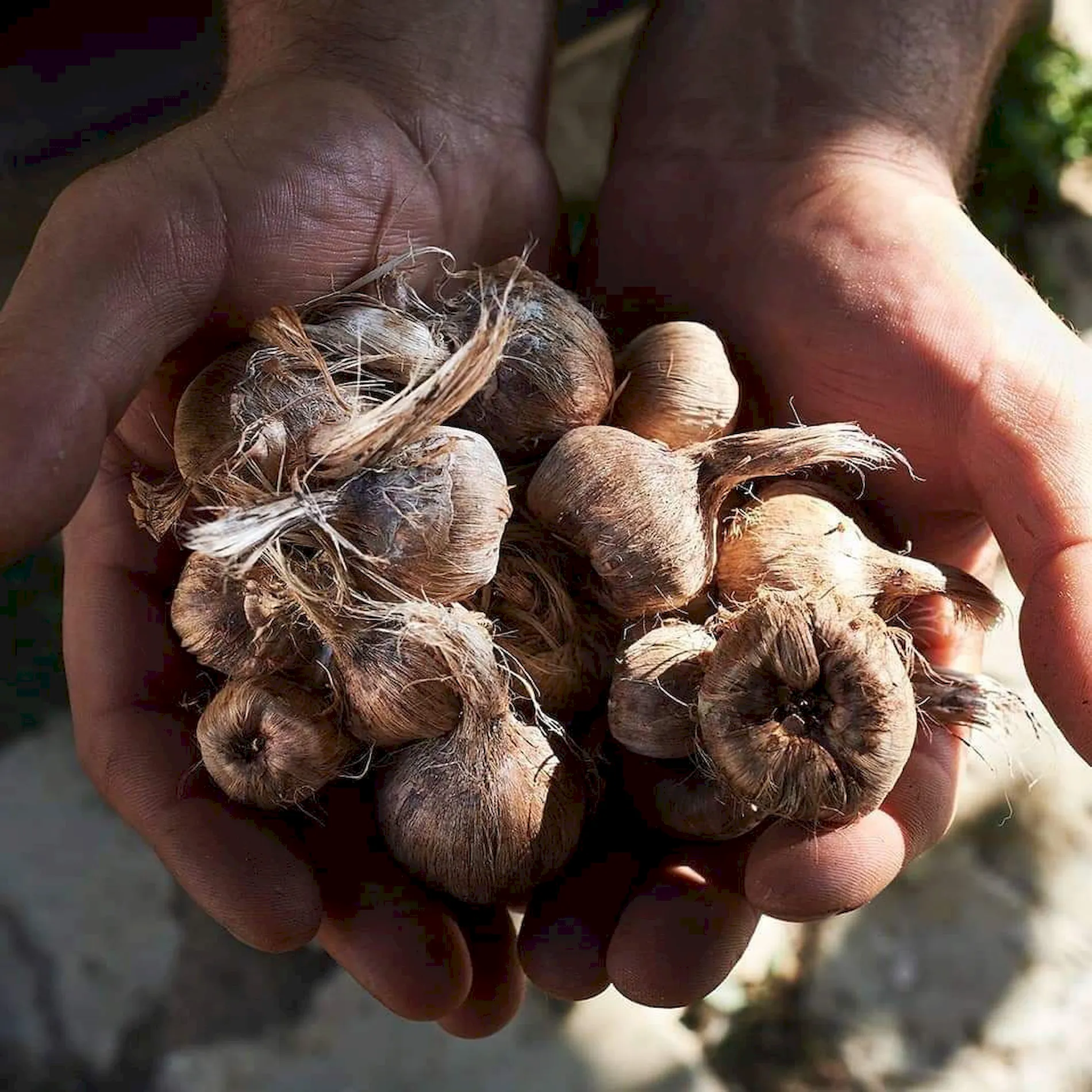
Discover with us the ancient story of saffron: from a precious spice in past civilizations to a versatile and creative ingredient in modern cuisine; let’s look at the geographical origins and global spread of this golden spice.
Saffron, scientifically known as “Crocus sativus”, is appreciated for its wonderful color and unique flavor. It is believed to originate from the Middle East and has been valued for millennia used both in cooking and in rituals and as medicine. Its cultivation has spread across Europe and Asia and has become a symbol of wealth and prosperity in cultures through the centuries.
Cultivation and main producing regions
Let’s delve into the cultivation techniques of saffron and the areas worldwide famous for this spice and how the climate affects the quality of the final product.
Saffron cultivation requires precision and a lot of patience, think that the collection of the delicate stigmas is done entirely by hand! Regions such as Castile-La Mancha in Spain and the Khorasan province in Iran are known for their high production where the dry and temperate climate favors its growth. These agricultural practices are sustainable and preserve tradition (but also the environment).
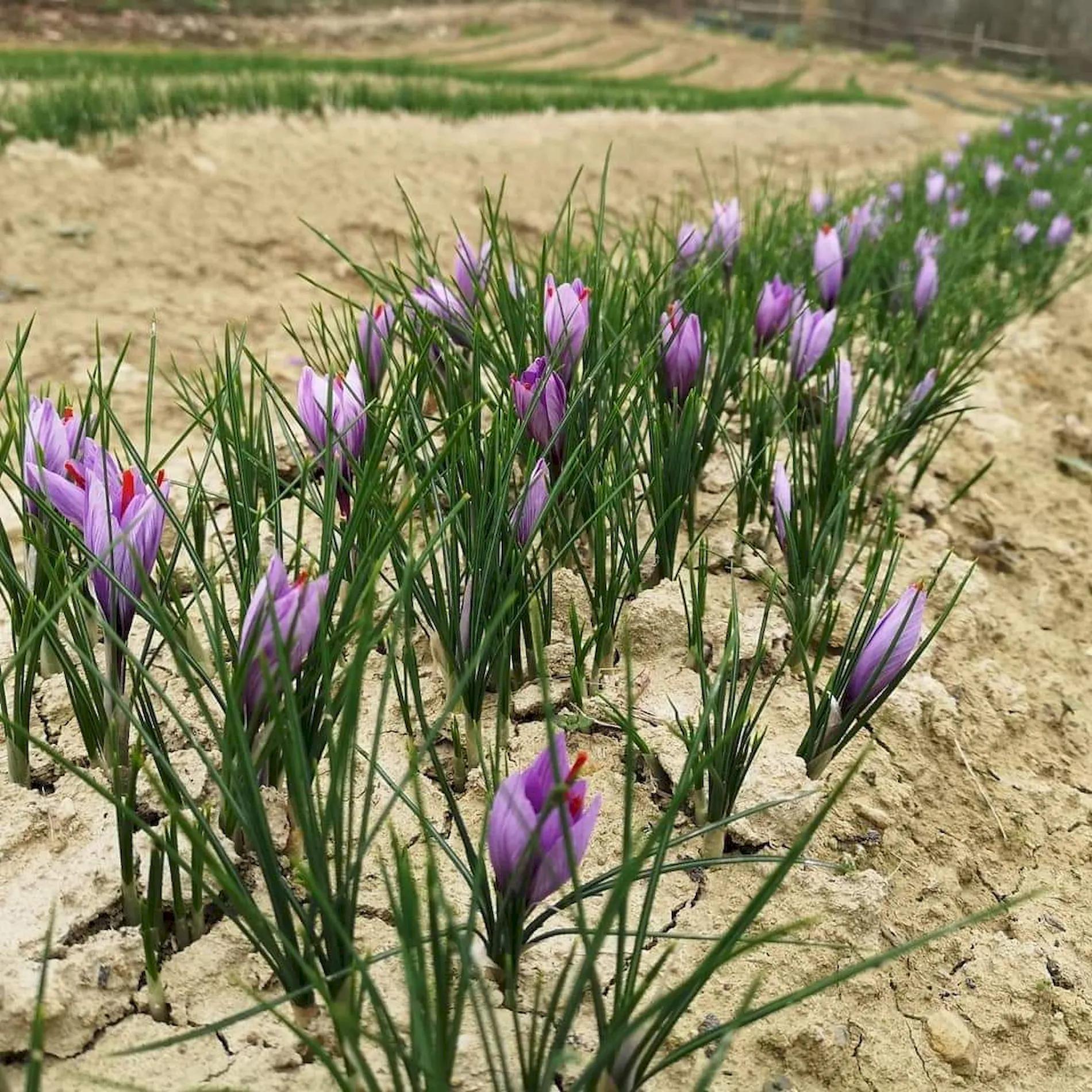
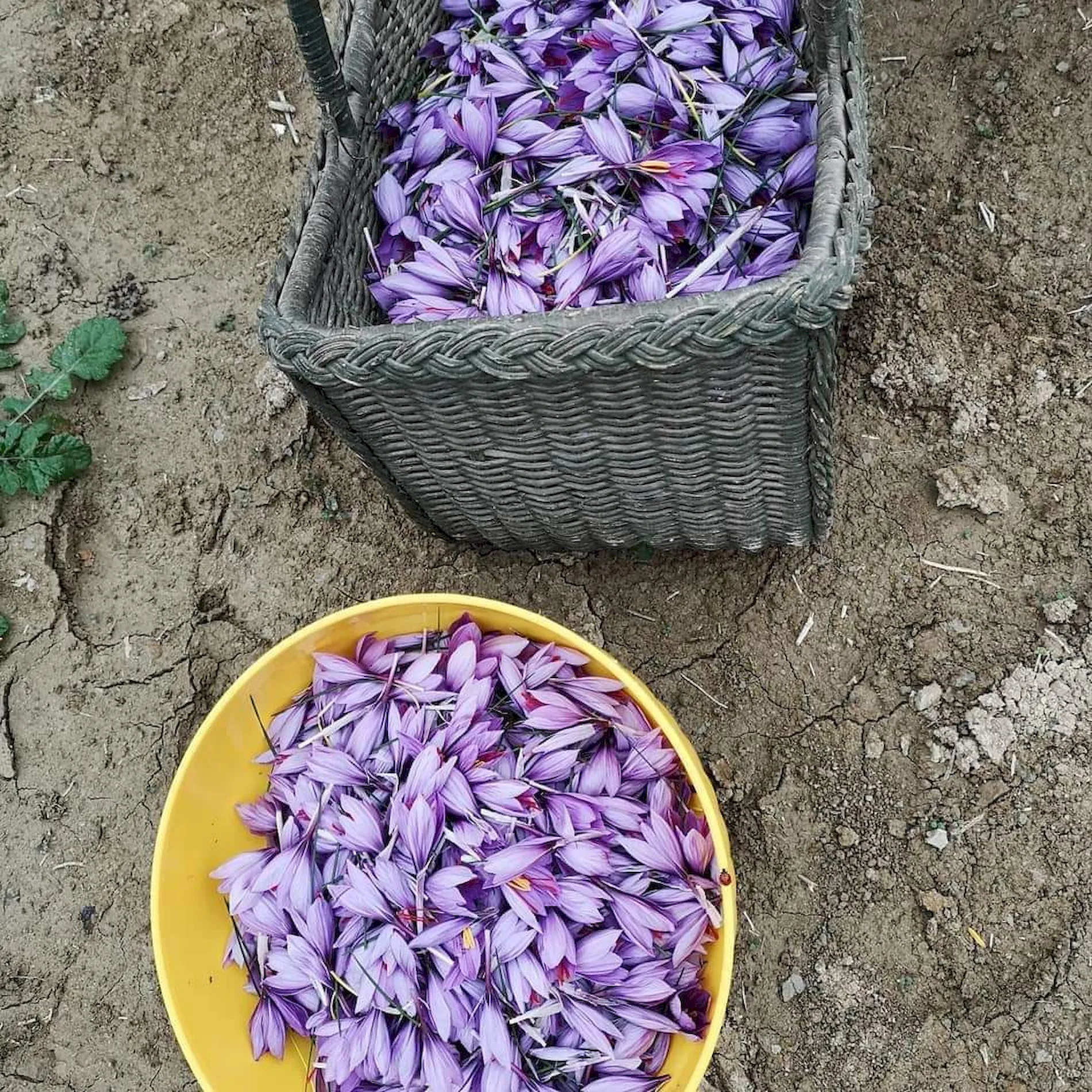
Saffron from Piedmont: tradition and innovation in cultivation
Piedmont is becoming a reference point for quality saffron cultivation through traditional practices and innovations that characterize this regional production.
Piedmont, known for its wines and truffles, is establishing itself as an important center for saffron production. Located in northwest Italy, it combines an ideal climate and fertile soil that are perfect for saffron cultivation. Local farmers, driven by a passion for sustainable and quality crops, are rediscovering ancient agricultural techniques and integrating them with innovative methods to optimize yield and saffron quality.
In the provinces of Cuneo, Asti, and Turin, small producers have begun to grow saffron on a small scale but with a particular focus on achieving exceptional quality. These initiatives undoubtedly enrich the agricultural biodiversity of the region and support the local economy, creating new job opportunities and influencing Piedmontese gastronomy.
Piedmontese saffron is receiving accolades both nationally and internationally and is becoming a symbol of how tradition and innovation can go hand in hand in modern agricultural production.
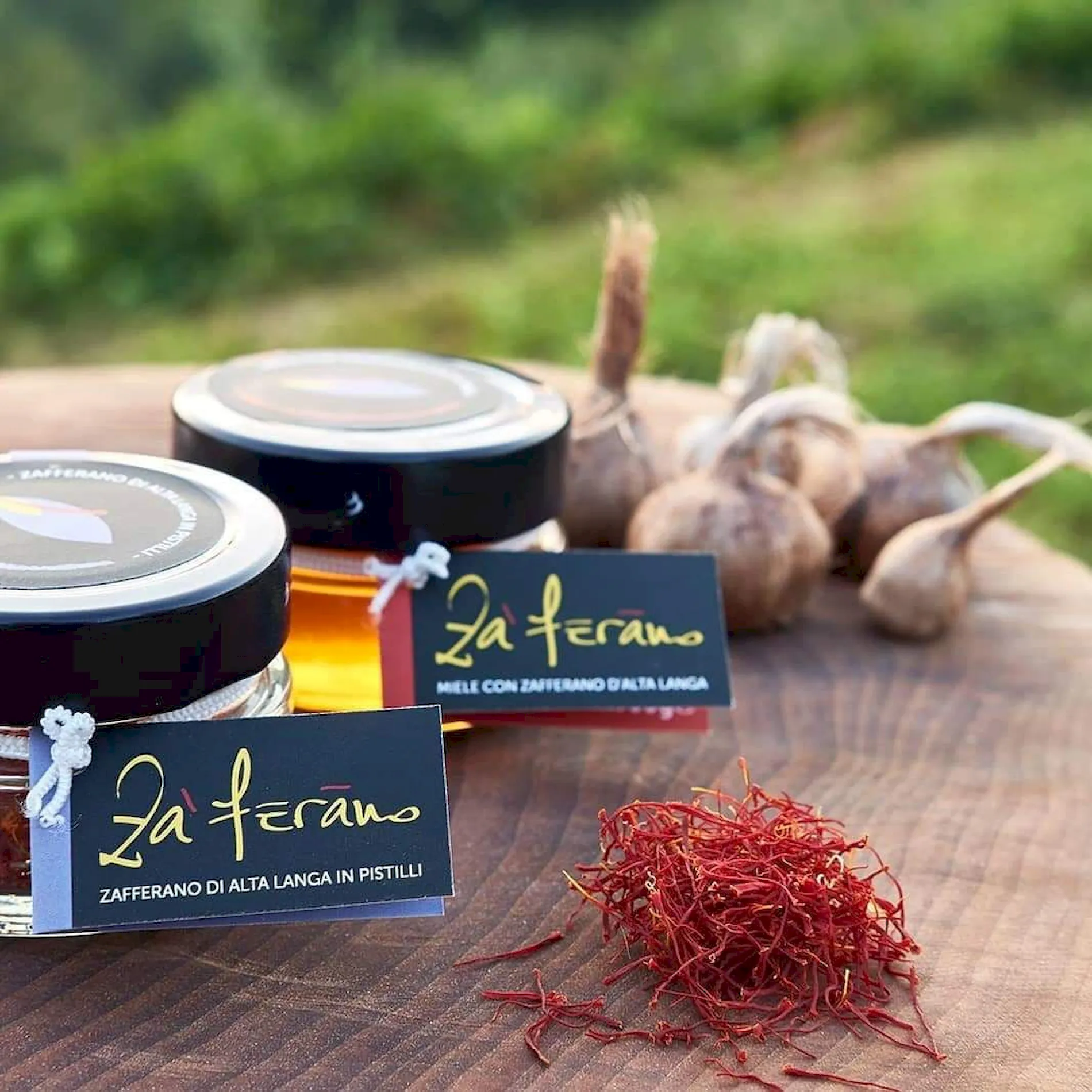
Culinary uses of saffron
Saffron can be used in the kitchen from appetizer to dessert.
Saffron is famous for its use in dishes such as Spanish paella and Milanese risotto, and a small amount is sufficient to enrich a wide variety of recipes, thanks to its intense flavor and vibrant color. If you go to the “recipes” section of our site, you can download for free the unmissable alchemy of notable chefs who have used saffron from Cascina Facelli in their dishes.
Remember to store saffron in a cool, dry place! It will maintain its qualities for a long time!
Benefits and medicinal uses of saffron
This spice is widely used in alternative medicine and scientific research has supported its benefits.
Recent studies have confirmed that saffron can improve mood and support visual health. Traditionally, it has been used to treat everything from inflammations to sleep disorders, exploiting its antioxidant and anti-inflammatory properties…try to believe…a warm tea in the evening with a few stigmas infused, and you will sleep like angels!
If you want to discover all the benefits of this magnificent spice, we invite you to take a look at our latest post on Instagram where we list the top 5 benefits for the human body. https://www.instagram.com/reel/C5bYi93MntO/?utm_source=ig_web_copy_link&igsh=MzRlODBiNWFlZA==
Curiosities and Economic Considerations
Saffron is one of the most expensive spices in the world. What is the economic impact of its cultivation on local communities?
Saffron is often called
“red gold” because of its high cost due to the very patient manual collection necessary to obtain a few grams of the product. This high cost has a significant impact on the economies of producing regions and contributes to their income by offering, among other things, job opportunities.
The production of saffron in Cascina Facelli
Visit our site to see the work and passion behind the prized saffron of Cascina Facelli in Alta Langa in the heart of Piedmont.
In Cascina Facelli, located among the enchanting hills of Alta Langa, we cultivate saffron with passion. Our farm, an ancient building dating back to 1840, is not just a place of agricultural production but also a haven of peace and beauty perfect for those seeking relaxation and, with only three rooms, a lot of privacy.
The collection of our saffron is strictly by hand, at certain hours of the day (very early) following traditional methods that guarantee the maximum quality of the product. We really commit to maintaining a high standard and preserve the integrity and purity of the stigmas to offer our customers a product of incomparable quality.
We have also introduced an innovative product like the Saffron Honey of Alta Langa: a delicious fusion that combines the sweet aroma of honey with the rich flavor of saffron that pairs perfectly especially with cheeses and that best brings out its complexity. Nothing prevents you from experimenting with many other combinations, even with your sweet dishes.
Visit our site for more information and to book a stay at Cascina Facelli where every detail speaks of history, comfort, and unique design. Come to live an experience that satisfies not only the palate but also the soul.
For more details on our production and available products, visit the official website of Cascina Facelli .
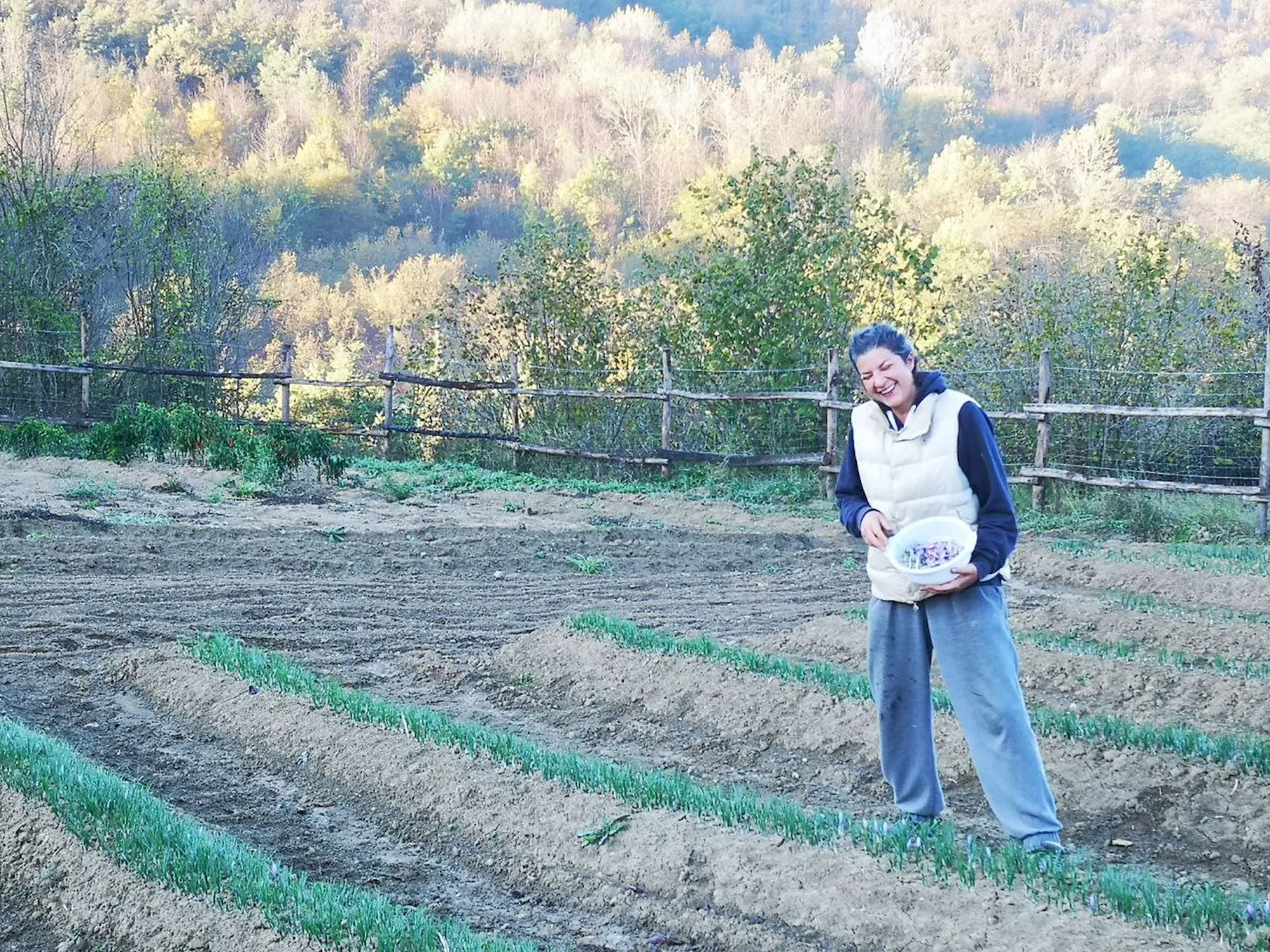
Challenges and sustainability
Finding initiatives to make this practice more sustainable is one of the challenges in saffron cultivation.
Despite its popularity, saffron production is threatened by challenges such as climate change, which alters the delicate conditions necessary for its growth. Fortunately, new technologies and cultivation methods are emerging to address this situation and ensure the long-term sustainability of saffron production.
The future of saffron
Reflections on the importance of saffron in global cultures and on the future prospects of this extraordinary spice.
Saffron continues to be a highly valued spice around the world, both for its culinary use and for its health benefits. Looking to the future, innovation in its production and sustainable practices will be crucial to maintain its availability and quality.
